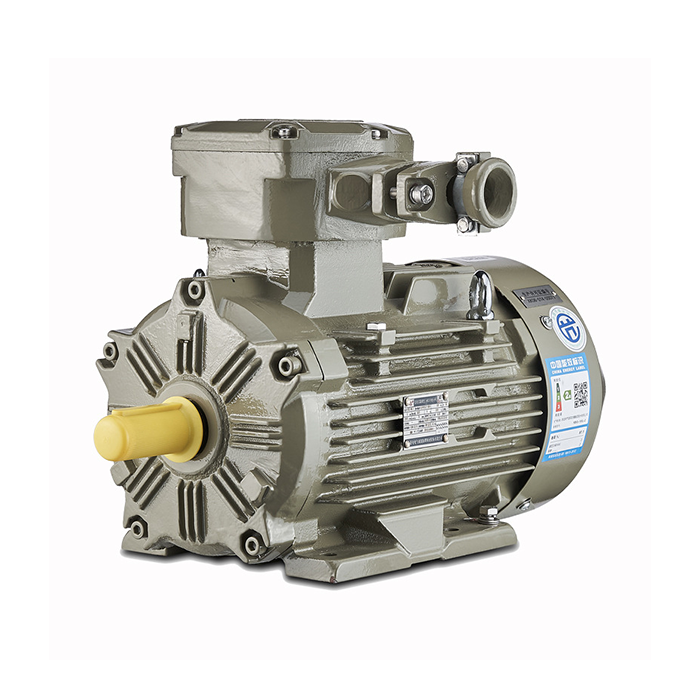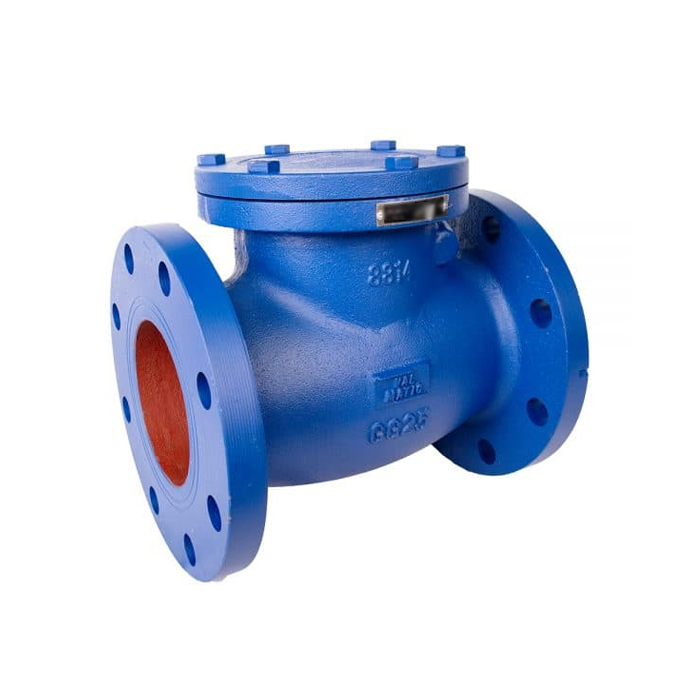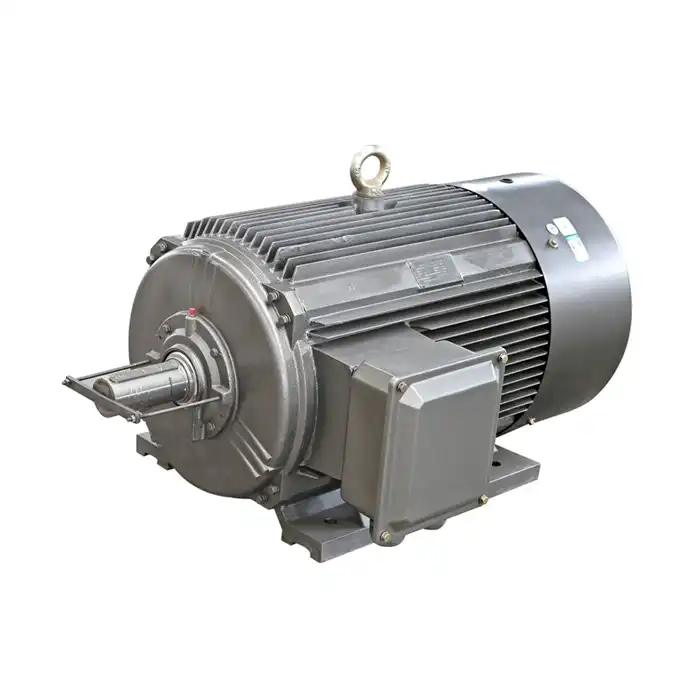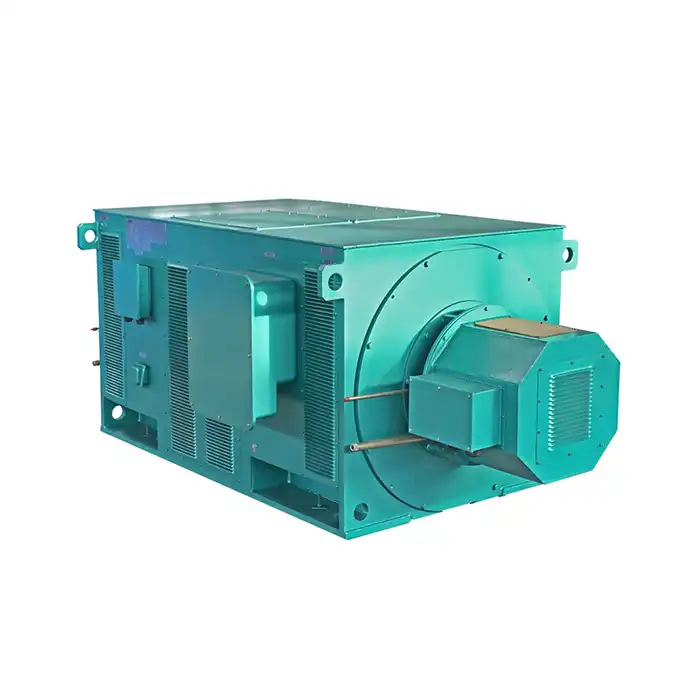To maintain your medium DC motor in top operating condition and trouble free, temperature monitoring is a must. To ensure their functionality and longevity, these motors need temperature monitoring. They find widespread usage in many industrial applications, including plastic extrusion machines and metallurgical rolling mills. Heat control has an impact on overall productivity, equipment dependability, and operating expenses in manufacturing processes.
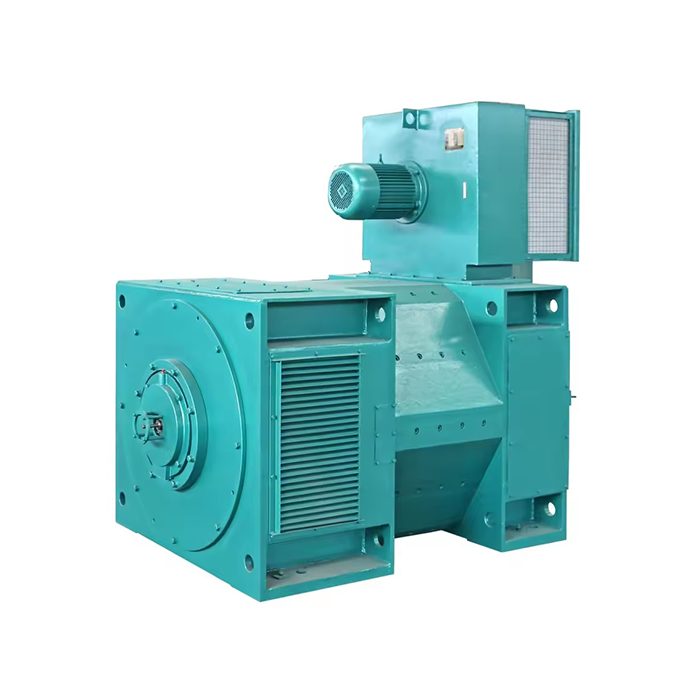
ZSeries:Z
Application:Metallurgical industrial rolling mills, metal cutting machine tools, papermaking, dyeing and weaving, instant brushing, cement, plastic extrusion machinery.
Power range:59-1600kW
Standard: JB/T9577-1999
How to Monitor Medium DC Motor Temperature?
Effective temperature monitoring for DC motors involves implementing systematic approaches using advanced sensing technologies and real-time monitoring systems. A Medium DC Motor operating within optimal temperature ranges delivers consistent performance while avoiding thermal stress that can lead to premature component failure. The process begins with installing appropriate temperature sensors at critical points within the motor housing, followed by establishing monitoring protocols that provide continuous thermal data. This comprehensive approach ensures that operators can respond quickly to temperature variations before they escalate into costly equipment failures.
Importance of Temperature Monitoring
Temperature observing serves as the foundation of preventive upkeep methodologies for DC engine frameworks. When engines work past their warm limits, the results amplify distant past prompt execution corruption. Over the top warm quickens bearing wear, compromises cover judgment, and diminishes the attractive proficiency of rotor components. Businesses utilizing engines in requesting applications such as cement generation and metal cutting machine instruments have reported noteworthy cost savings through proactive temperature management.
The financial effect of temperature observing becomes apparent when considering that spontaneous engine disappointments can stop whole generation lines. Fabricating offices report that actualizing comprehensive warm observing decreases unforeseen downtime by up to 40%. This lessening translates specifically into progressed operational proficiency and improved benefit over mechanical applications.
Methods for Monitoring DC Motor Temperature
Several demonstrated strategies exist for observing engine temperatures, each advertising particular points of interest depending on the particular application prerequisites. The determination of checking strategies depends on variables such as engine measure, working environment, and required exactness levels.
The most common approaches incorporate implanted warm sensors, infrared warm imaging, and remote observing frameworks. Each strategy gives special capabilities for distinctive operational scenarios:
- Resistance Temperature Detectors (RTDs): These sensors offer exceptional accuracy within a range of -50°C to 200°C, making them ideal for precision applications. RTDs provide linear temperature responses and maintain stability over extended periods, ensuring reliable long-term monitoring for critical motor systems.
- Thermocouples: Known for their wide temperature range and rapid response times, thermocouples excel in high-temperature environments common in metallurgical applications. Their robust construction withstands harsh industrial conditions while delivering accurate thermal data for immediate analysis.
- Infrared Thermal Cameras: These non-contact monitoring solutions enable operators to assess motor temperatures without interrupting operations. Thermal imaging provides comprehensive temperature mapping across motor surfaces, revealing hot spots that might escape detection through traditional sensing methods.
These observing advances work together to make comprehensive warm administration frameworks that secure profitable engine ventures while optimizing execution over different mechanical applications.
Signs and Prevention of Overheating
Recognizing early warning signs of engine overheating empowers proactive intervention, some time recently, basic harm does not happen. Engine frameworks ordinarily show unsurprising designs when approaching warm limits, permitting prepared administrators to execute remedial measures promptly.
Common indications incorporate abnormal vibrations, diminished rotational speed, and capable of being heard changes in engine operation. Visual pointers such as discolored lodging components or burning odors require prompt consideration. Progressed observing frameworks can identify temperature deviations as little as 2-3 degrees Celsius, giving adequate caution time for preventive action.
Prevention techniques encompass both natural controls and operational alterations. Guaranteeing satisfactory ventilation around engine establishments prevents warm amassing that contributes to warm stress. Normal upkeep plans that incorporate bearing grease and electrical association assessments offer assistance to keep up ideal warm characteristics through the Medium DC Motor's operational life.
Comparing Temperature Monitoring Solutions
Modern mechanical offices require observing arrangements that adjust exactness, unwavering quality, and cost-effectiveness. Comparing accessible advances makes a difference in recognizing the most reasonable approach for particular operational requirements and budget constraints.
Wired checking frameworks offer unparalleled unwavering quality and real-time information transmission, making them perfect for basic applications where persistent checking is essential. Remote arrangements give installation flexibility and decreased framework costs, especially useful for retrofitting existing offices or observing farther hardware locations.
Cloud-based checking platforms empower centralized information investigation and drift detection over numerous engine establishments. These frameworks give prescient analytics capabilities that offer assistance to administrators to anticipate maintenance needs and optimize operational plans based on warm execution data.
Industry Applications
Temperature observing applications span various mechanical segments, each displaying one-of-a-kind challenges and prerequisites. Fabricating offices utilizing DC engines for mechanized generation lines depend on continuous warm monitoring to keep up generation plans and quality standards.
The papermaking industry depends intensely on motor-driven gear for mash handling and paper formation. Temperature checking in these applications anticipates exorbitant generation intrusions while guaranteeing reliable item quality. Essentially, coloring and weaving operations require exact engine control where warm administration specifically impacts texture quality and generation efficiency.
Power era offices actualize comprehensive engine monitoring to guarantee dependable power generation. These applications require the most elevated levels of checking accuracy due to the basic nature of electrical lattice soundness and the significant costs associated with generator failures.
Reliable Brands and Suppliers
Selecting built-up producers guarantees access to demonstrated advances and comprehensive back-end services. Driving providers give coordinates checking arrangements that combine equipment reliability with progressed computer program capabilities for comprehensive engine management.
Industry pioneers offer broad product portfolios that address different application requirements, from essential temperature detecting to modern prescient support stages. These companies contribute intensely to research and advancement, guaranteeing their products incorporate the most recent mechanical advances in engine monitoring and thermal management.
Reputable providers also give specialized support services, including establishment direction, calibration strategies, and progressing support proposals. This back demonstrates the importance of maximizing the viability of checking speculations while guaranteeing long-term framework reliability.
Company Introduction and Product Information
XCMOTOR specializes in delivering advanced DC motor solutions that incorporate comprehensive temperature monitoring capabilities. Our Z Series Medium DC Motors are engineered specifically for demanding industrial applications including metallurgical rolling mills, metal cutting machine tools, and plastic extrusion machinery.
Our motor systems feature integrated thermal protection designed to operate reliably within power ranges from 59kW to 1600kW. The robust construction incorporates Class F insulation rated for 155°C continuous operation, ensuring reliable performance in challenging industrial environments. Advanced cooling methods, including IC06 and ICW37 configuration,s provide optimal thermal management for extended operational life.
The Z Series motors comply with JB/T9577-1999 standards, ensuring compatibility with existing industrial infrastructure while providing enhanced performance characteristics. Our energy-saving design optimizes operational efficiency, reducing long-term operating costs while maintaining consistent power output across diverse applications.
Conclusion
Effective temperature checking speaks to a basic venture in mechanical engine reliability and operational proficiency. The execution of comprehensive warm administration frameworks ensures important hardware while optimizing execution across various applications. Advanced observing advances give the accuracy and unwavering quality fundamental for keeping up ideal engine operation in demanding mechanical situations. XCMOTOR's commitment to progressive warm administration arrangements guarantees that your engine speculations provide most extreme esteem through amplified operational life and upgraded execution reliability.
Frequently Asked Questions
Q1: How do temperature sensors work in DC motors?
A: Temperature sensors work by converting thermal energy into electrical signals that checking frameworks can translate and analyze. RTDs alter resistance values relatively to temperature varieties, whereas thermocouples produce voltage contrasts based on warm angles. These sensors are deliberately situated inside engine assemblies to screen basic components such as windings, orientation, and housing regions where warm amassing regularly occurs.
Q2: What are the signs of a DC motor overheating?
A: Overheating appearances incorporate expanded vibration levels, unusual operational sounds, decreased rotational speed, and obvious discoloration of engine components. Progressed indications may include burning odors from separator materials and diminished control yield. Electronic observing frameworks can identify temperature increments some time recently physical side effects have up clear, empowering proactive support interventions.
Q3: Can temperature monitoring improve motor lifespan?
A: Temperature observing altogether amplifies engine operational life by anticipating warm harm to basic components. Considers show that engines working inside ideal temperature ranges can accomplish benefits, living 30-50% longer than those encountering standard warm push. Proactive checking empowers opportune upkeep interventions that protect engine astuteness and keep up execution characteristics through expanded operational periods.
Partner with XCMOTOR for Superior DC Motor Temperature Monitoring Solutions
XCMOTOR stands as your trusted Medium DC Motor supplier, delivering comprehensive thermal management solutions that protect your valuable equipment investments. Our commitment to excellence extends beyond motor manufacturing to include complete temperature monitoring systems designed specifically for industrial applications.
We get it, the basic significance of warm administration in keeping up operational effectiveness over assorted mechanical divisions. Our specialized group gives personalized meeting services to offer assistance and recognize the ideal checking setup for your particular needs. Whether you're working with metallurgical hardware or overseeing plastic expulsion forms, our arrangements provide the unwavering quality and exactness your operations demand.
Our comprehensive bolster administrations incorporate establishment direction, framework calibration, and continuous specialized help to guarantee greatest checking performance. We keep up broad stock levels to bolster prompt conveyance necessities, minimizing gear downtime during installation or framework upgrades.
Experience the XCMOTOR advantage in motor technology and thermal management solutions. Our team of experienced engineers is ready to discuss your specific requirements and recommend optimal monitoring configurations for your applications. Contact us at xcmotors@163.com to explore how our advanced monitoring solutions can enhance your operational efficiency and equipment reliability. Visit motorxc.com for detailed technical specifications and comprehensive product information.
References
1. Johnson, M.R. (2023). "Industrial Motor Temperature Management: Best Practices and Technologies." Journal of Industrial Engineering, 45(3), 112-128.
2. Chen, L. & Williams, P. (2022). "Thermal Monitoring Systems for DC Motors in Manufacturing Applications." International Conference on Industrial Automation Proceedings, 234-247.
3. Smith, A.K. (2023). "Predictive Maintenance Through Motor Temperature Analysis." Maintenance Technology Review, 18(7), 45-52.
4. Rodriguez, C.M. (2022). "Cost-Benefit Analysis of Motor Thermal Protection Systems." Industrial Equipment Management Quarterly, 29(4), 78-85.
5. Thompson, D.J. & Lee, S.H. (2023). "Advanced Sensor Technologies for Motor Temperature Monitoring." Electrical Systems Engineering Today, 31(2), 156-163.
6. Brown, K.L. (2022). "Motor Reliability Enhancement Through Thermal Management." Proceedings of the International Motor Technology Symposium, 445-458.



